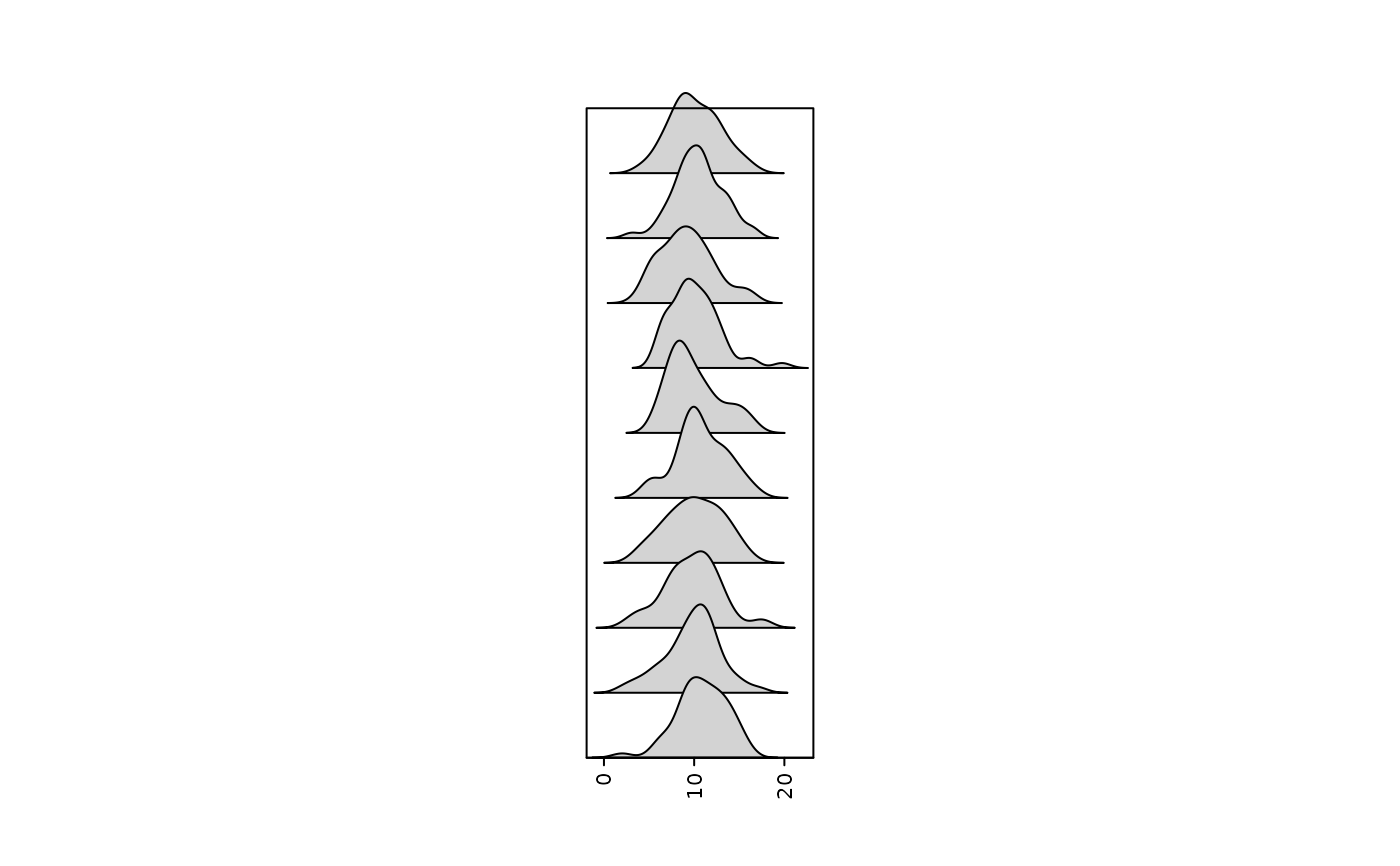
Helper to specify heatmap annotation for variable distribution density plot
Source:R/heatmaps-varAnnotation.R
anno_var_density.RdUse this as an argument to varAnnotation(), which itself is used by cor_heatmap var_anno argument.
Arguments
- fun
function applied to all variables, with apply()
- size
width or height as a grid unit object
- type
Type of graphics to represent density distribution. "lines" for normal density plot; "violine" for violin plot and "heatmap" for heatmap visualization of density distribution.
- xlim
Range on x-axis.
- heatmap_colors
A vector of colors for interpolating density values.
- joyplot_scale
Relative height of density distribution. A value higher than 1 increases the height of the density distribution and the plot will represented as so-called "joyplot".
- border
Wether draw borders of the annotation region?
- gp
Graphic parameters for the boxes. The length of the graphic parameters should be one or the number of observations.
- axis
Whether to add axis?
- ...
Arguments passed on to
ComplexHeatmap::anno_densityaxis_paramparameters for controlling axis. See
default_axis_paramfor all possible settings and default parameters.
- data
OPTIONAL phyloseq or psExtra, only set this to override use of same data as in heatmap
- vars
OPTIONAL selection vector of variable names, only set this if providing data argument to override default
- which
OPTIONAL indicating if it is a 'column' or a 'row' annotation, only set this if providing data argument to override default
Examples
library(ComplexHeatmap)
set.seed(123)
fakeData <- as.data.frame.matrix(matrix(rnorm(500, 10, 3), ncol = 10))
names(fakeData) <- paste0("var_", 1:10)
# draw the plots without a heatmap, you will never normally do this!
vp <- viewport(width = 0.75, height = 0.75)
grid.newpage()
pushViewport(vp)
draw(
anno_var_density(data = fakeData, vars = names(fakeData), which = "row")
)
 grid.newpage()
pushViewport(vp)
draw(
anno_var_density(
data = fakeData, fun = function(x) log(x + 1),
vars = rev(names(fakeData)), type = "heatmap",
which = "column"
)
)
grid.newpage()
pushViewport(vp)
draw(
anno_var_density(
data = fakeData, fun = function(x) log(x + 1),
vars = rev(names(fakeData)), type = "heatmap",
which = "column"
)
)
